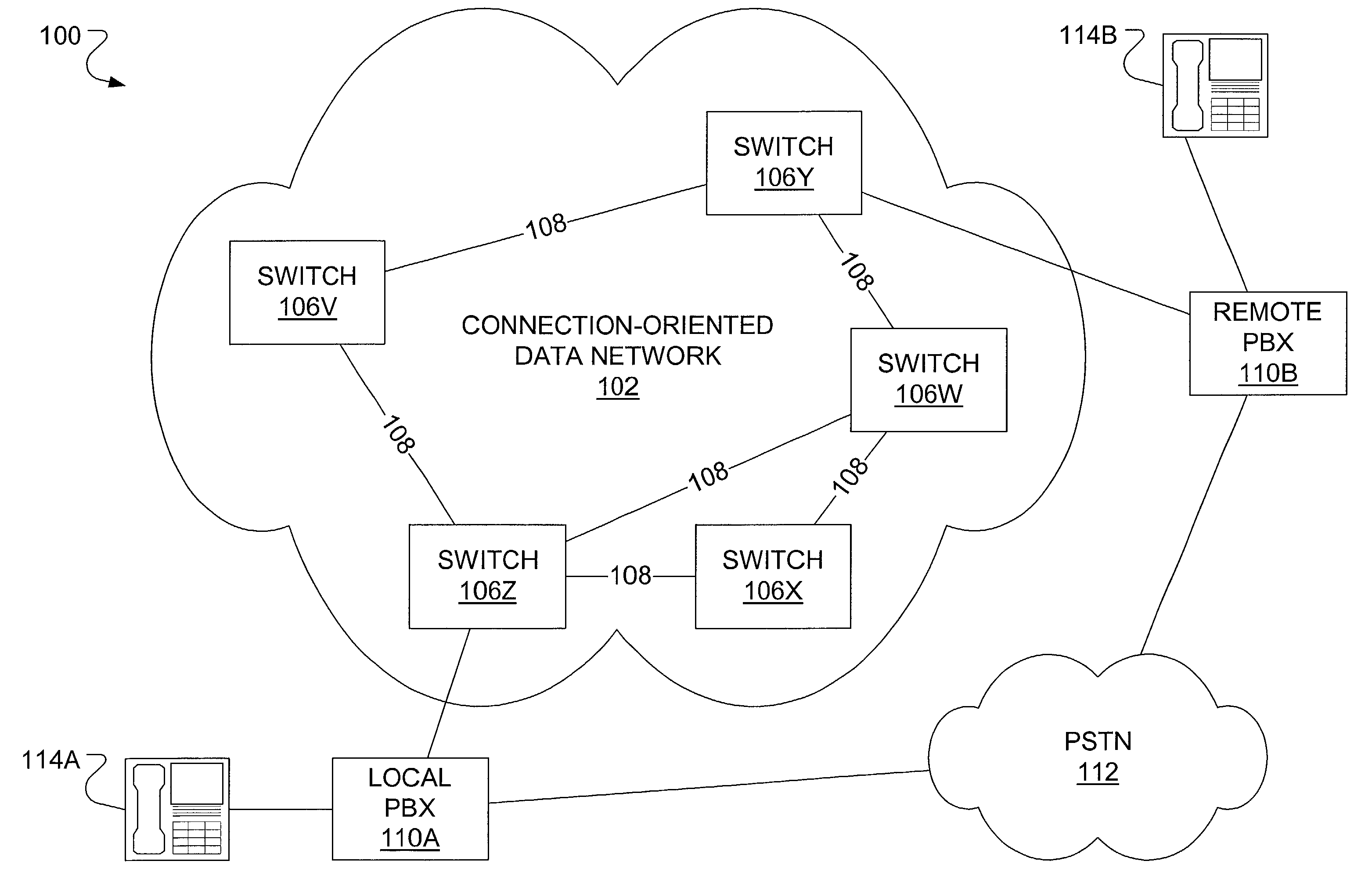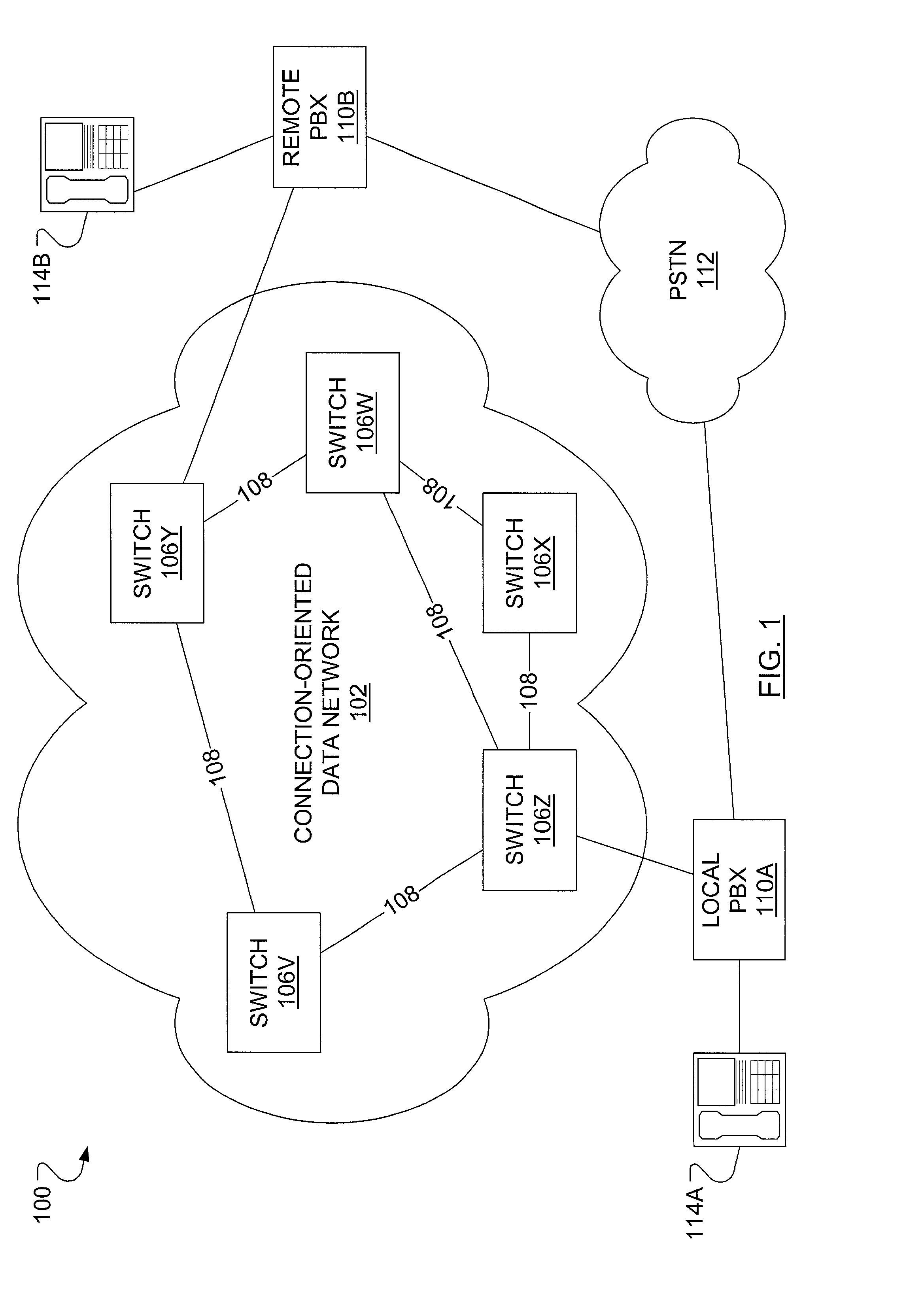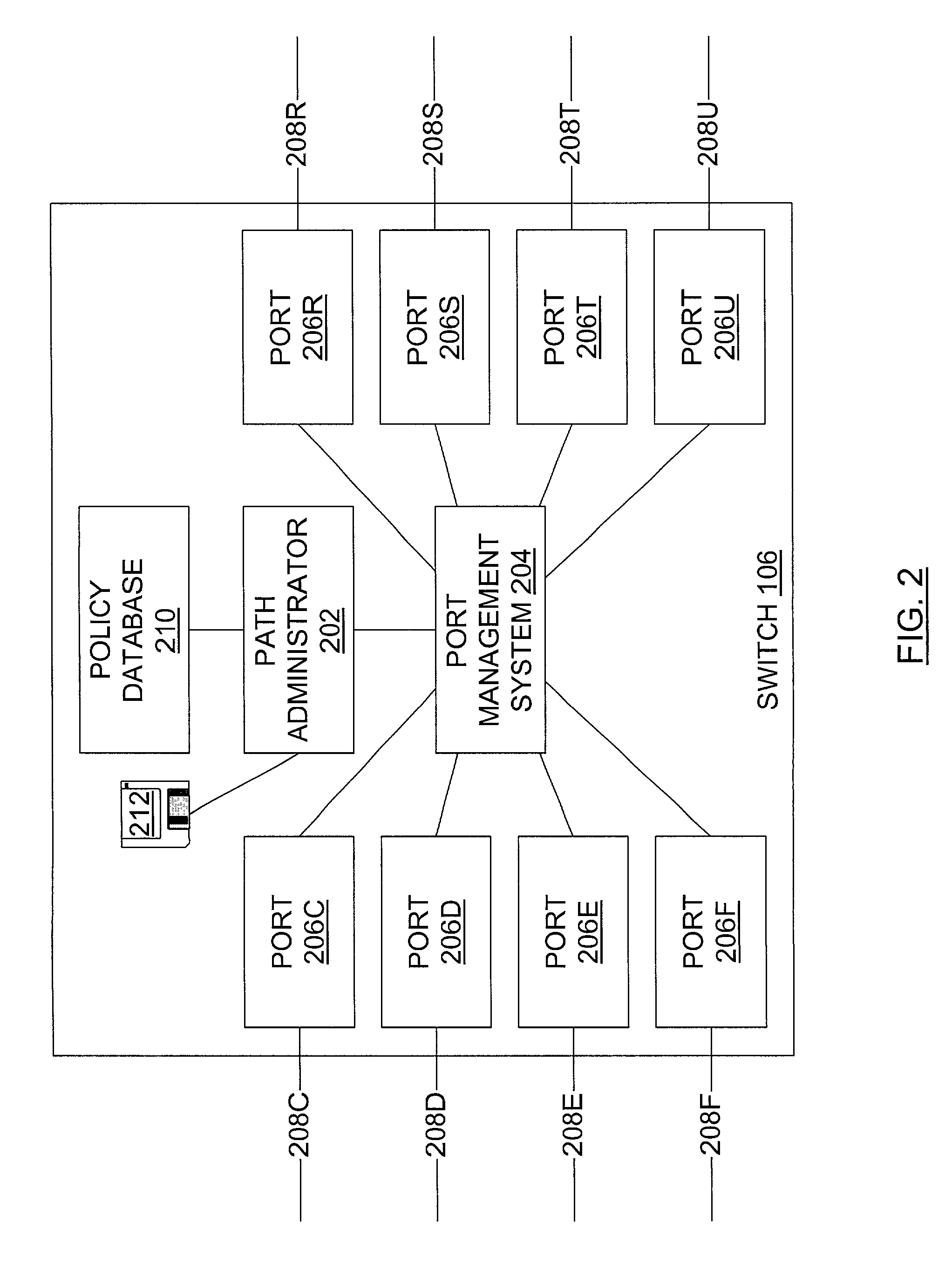Dynamic adaptation to congestion in connection-oriented networks
a technology of connection-oriented networks and congestion, applied in data switching networks, frequency-division multiplexes, instruments, etc., can solve problems such as network congestion and the confluence of the entire network, and achieve the effect of avoiding areas of high congestion, efficient alleviation of network congestion and efficient utilization of network resources
- Summary
- Abstract
- Description
- Claims
- Application Information
AI Technical Summary
Benefits of technology
Problems solved by technology
Method used
Image
Examples
Embodiment Construction
[0016]FIG. 1 illustrates a communication system 100 that includes a connection-oriented data network 102 including a number of switches 106V, 106W, 106X, 106Y, 106Z connected by a number of links 108 (also referred to as an individual link 108). The links 108 may be provisioned to carry trunks. The connection-oriented data network 102 may be used to connect a local private branch exchange telephone system (PBX) 110A to remote PBX 110B thereby facilitating a voice connection between a local telephone station apparatus 114A and a remote telephone station apparatus 114B. Alternatively, the local PBX 110A may connect to the remote PBX 110B via a public switched telephone network (PSTN) 112. The connection-oriented data network 102 may carry many types of data traffic including, Asynchronous Transfer Mode (ATM) traffic, frame relay traffic, Multi-Protocol Label Switched (MPLS) traffic, Internet Protocol (IP) traffic, etc.
[0017]A network exemplary of the connection-oriented data network 1...
PUM
 Login to View More
Login to View More Abstract
Description
Claims
Application Information
 Login to View More
Login to View More - R&D
- Intellectual Property
- Life Sciences
- Materials
- Tech Scout
- Unparalleled Data Quality
- Higher Quality Content
- 60% Fewer Hallucinations
Browse by: Latest US Patents, China's latest patents, Technical Efficacy Thesaurus, Application Domain, Technology Topic, Popular Technical Reports.
© 2025 PatSnap. All rights reserved.Legal|Privacy policy|Modern Slavery Act Transparency Statement|Sitemap|About US| Contact US: help@patsnap.com



